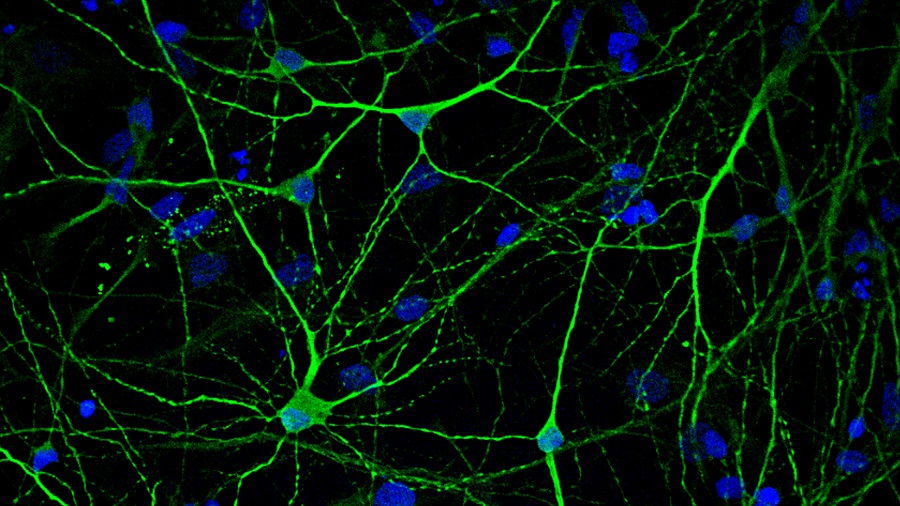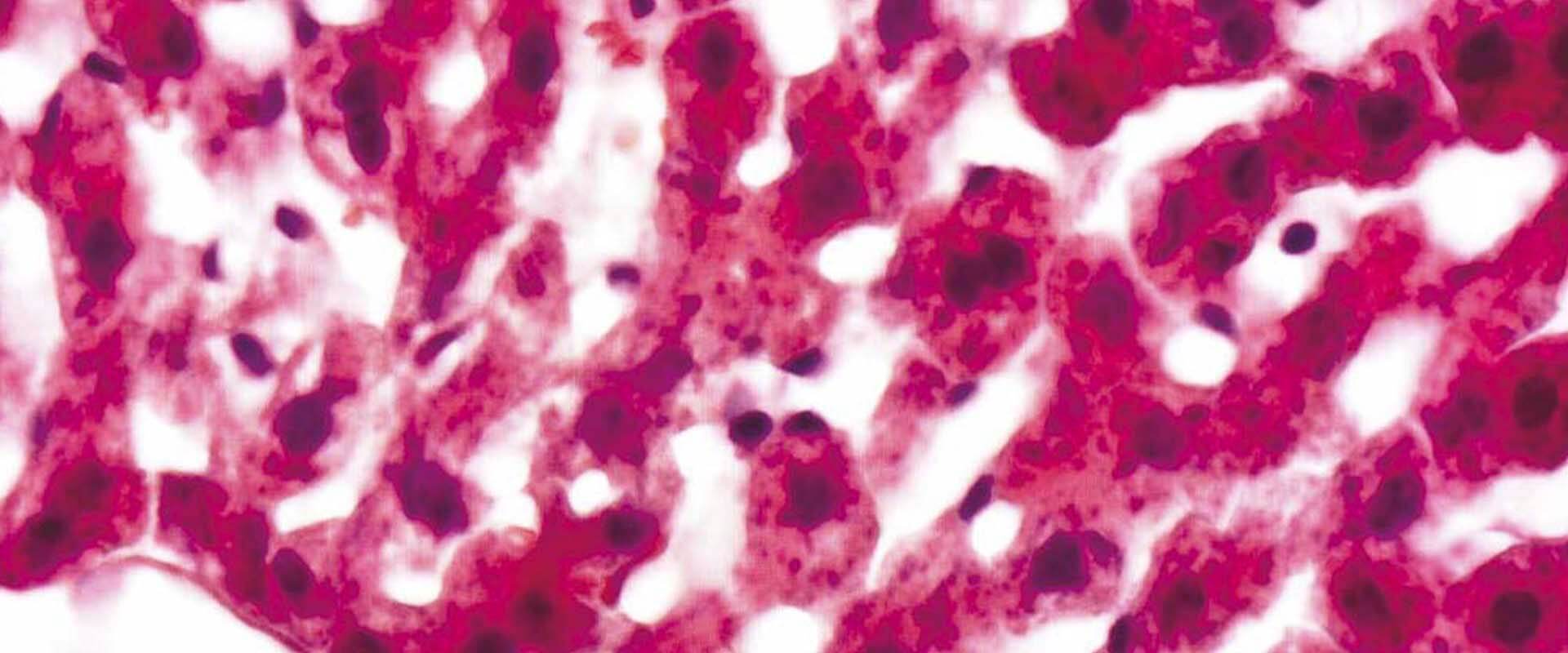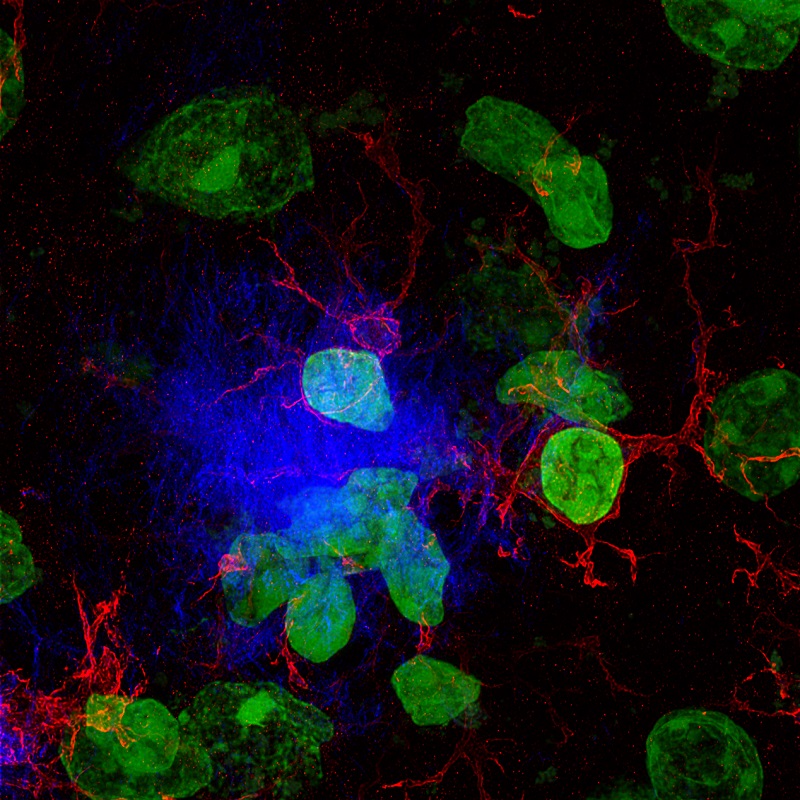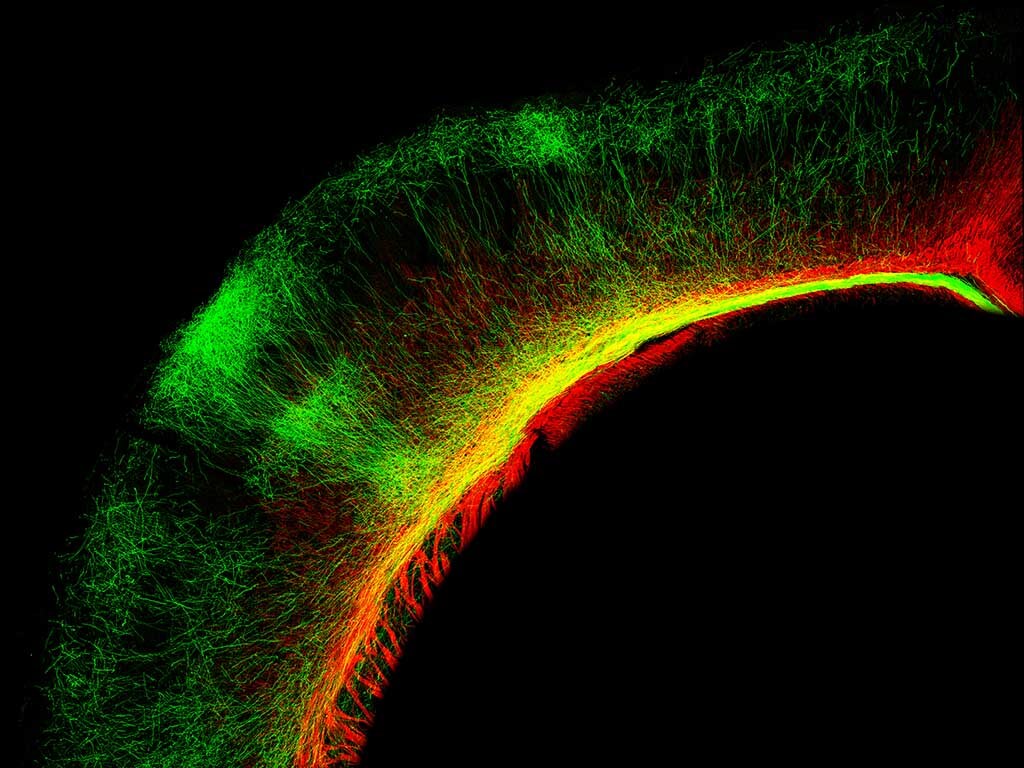Synaptic and extrasynaptic distribution of NMDA receptors in the cortex of Alzheimer’s disease patients.
An innovative protocol reveals the distribution of NMDA receptors in the brains of individuals with Alzheimer’s
• This study, led by the Institute for Neurosciences UMH-CSIC, analyzes for the first time the distribution of the proteins that form NMDA receptors in synaptic and extrasynaptic membranes in postmortem brains with Alzheimer’s disease.
• The findings provide a new perspective on the synaptic mechanisms involved in Alzheimer’s disease.
(Photo: IN UMH-CSIC researchers Sergio Escamilla, Inmaculada Cuchillo Ibáñez and Javier Sáez Valero)
Researchers from the Institute for Neurosciences (IN), a joint center of the Miguel Hernández University of Elche (UMH) and the Spanish National Research Council (CSIC), who are also part of the Network Center for Biomedical Research in Neurodegenerative Diseases (CIBERNED) and the Alicante Institute for Health and Biomedical Research (ISABIAL), have developed a cellular fractionation protocol. This method allows for precise analysis of the proteins located in synaptic membranes and in membranes outside the synapses, known as extrasynaptic membranes, in human postmortem brains.
In this study, recently published in Alzheimer’s & Dementia: The Journal of the Alzheimer’s Association, the authors investigated NMDA receptors due to their importance in synaptic transmission and their special relevance in Alzheimer’s disease. Compared to healthy individuals, the results reveal that people with Alzheimer’s disease exhibit decreased NMDA receptors in synapses and increased extrasynaptic membranes.
Alzheimer’s disease is characterized by progressive memory loss and affects communication between neurons. This process largely depends on synapses, where NMDA receptors play a critical role in learning and memory. “Most NMDA receptors are found in synapses, where they enhance neuronal connections. However, those located outside the synapse are more associated with processes of toxicity and cell death, which may contribute to disease progression”, explains Inmaculada Cuchillo Ibáñez, the researcher at the Altered Molecular Mechanism in Alzheimer’s Disease and Dementia laboratory, which led the study.

Neurons generated from stem cells (from skin fibroblasts) of a patient with sporadic Alzheimer’s disease. Visualized with a specific green fluorescent marker. Nuclei are shown in blue. Photo: IN UMH-CSIC
The team analyzed samples from human postmortem brains, including healthy individuals and patients at various stages of neurodegeneration. The results show a distinct distribution of NMDA receptors in the cortex of patients with Alzheimer’s disease, where the number of synaptic NMDA receptors is significantly reduced, while extrasynaptic receptors increase compared to healthy individuals. This imbalance suggests that neuronal toxicity-related activity is favored in Alzheimer’s disease, as opposed to the primary function of synaptic transmission, likely contributing to disease progression.
A Pioneering Protocol for Human Postmortem Brains
The main advancement achieved by the researchers is the optimization of a cellular fractionation protocol that allows for the separation of synaptic membranes from extrasynaptic membranes, a feat that had not been previously accomplished in frozen human postmortem brains. “Other studies have measured the total levels of NMDA receptors in the human brain but did not differentiate between those located in synapses and extrasynapses. We adapted a protocol designed for fresh mouse brains to human samples, achieving this crucial separation,” highlights Sergio Escamilla, the first author of the article.
The method is based on the use of detergents that dissolve the lipids in non-synaptic membranes, while synaptic membranes, due to their high protein content, remain mostly intact. Subsequently, centrifugation is used to separate the two membrane types for analysis.
Towards new therapeutic approaches
The findings of this study could open new avenues for Alzheimer’s disease treatment. “With this protocol, we can accurately determine whether specific agents, such as modulators or blockers, have a greater affinity for synaptic or extrasynaptic receptors—not just NMDA receptors—which has important therapeutic implications,” notes Cuchillo.
The study, which involved collaboration with the laboratories of José Vicente Sánchez Mut and Isabel Pérez Otaño at IN UMH-CSIC, also utilized transgenic mice to validate the results obtained in humans. Although similar alterations in NMDA receptors were detected, the differences between species underscore the need for studies on human tissue to better understand the disease.
With this pioneering protocol, the researchers are paving the way to explore the molecular basis of Alzheimer’s disease and seek more effective treatments. In this vein, researcher Javier Sáez Valero, who heads the Altered Molecular Mechanism in Alzheimer’s Disease and Dementia laboratory at IN UMH-CSIC, emphasizes the importance of this type of research due to the role of NMDA receptors in current Alzheimer’s treatments, as memantine, one of the most commonly used drugs for the disease, is an NMDA receptor blocker.
This work has been made possible thanks to the financial support provided by the Health Research Fund, co-funded by the European Regional Development Fund (ERDF “Investing in your future”); the Network Center for Biomedical Research in Neurodegenerative Diseases (CIBERNED); the Carlos III Health Institute; and the Directorate General for Science and Research of the Generalitat Valenciana.
Source: Institute for Neurosciences UMH-CSIC (in.comunicacion@umh.es)

 Español
Español



